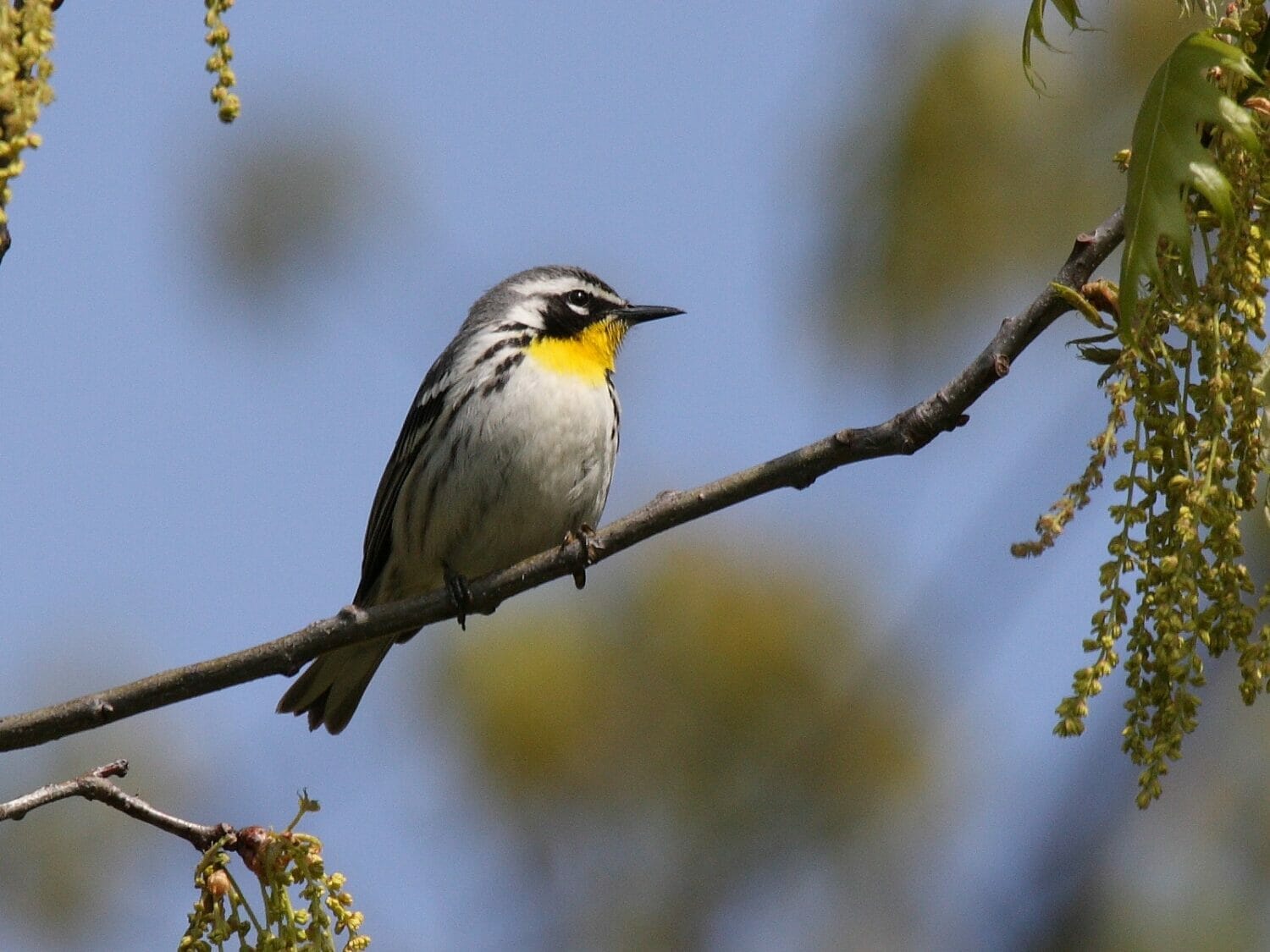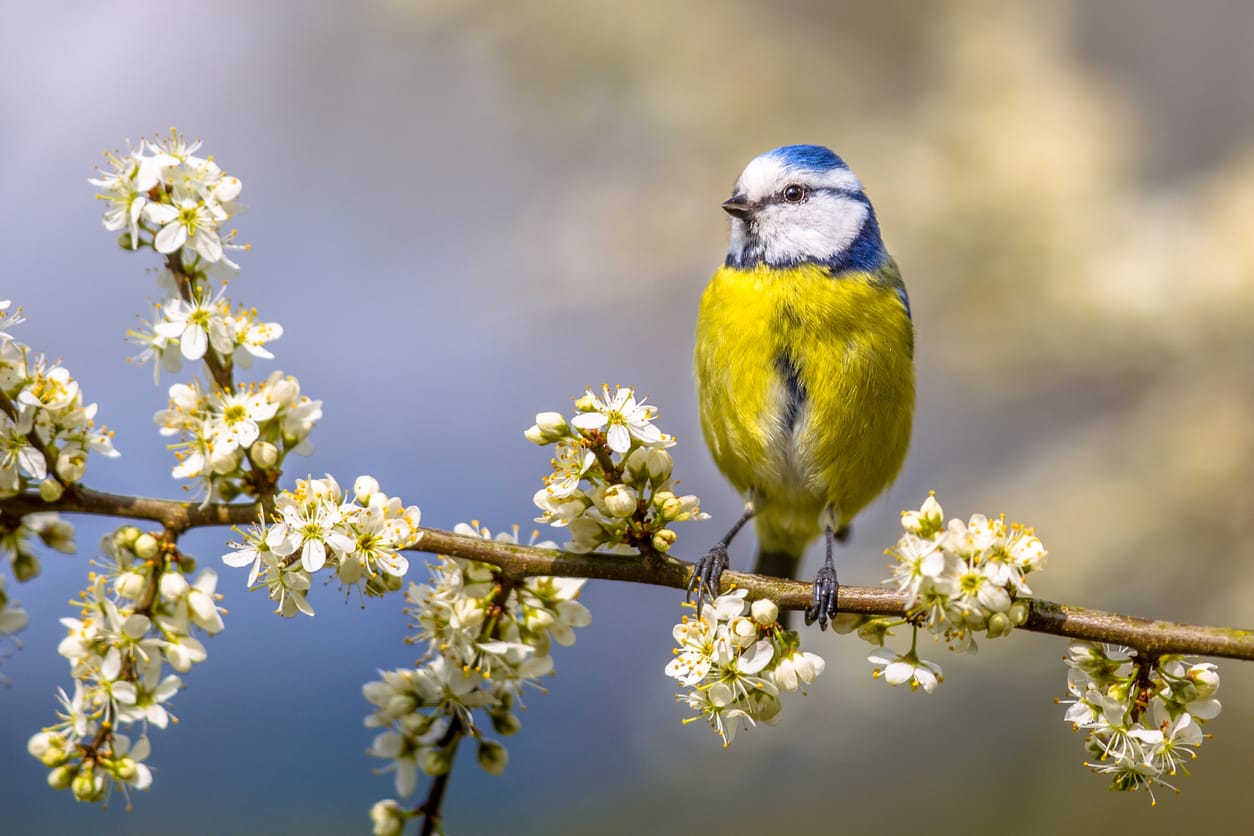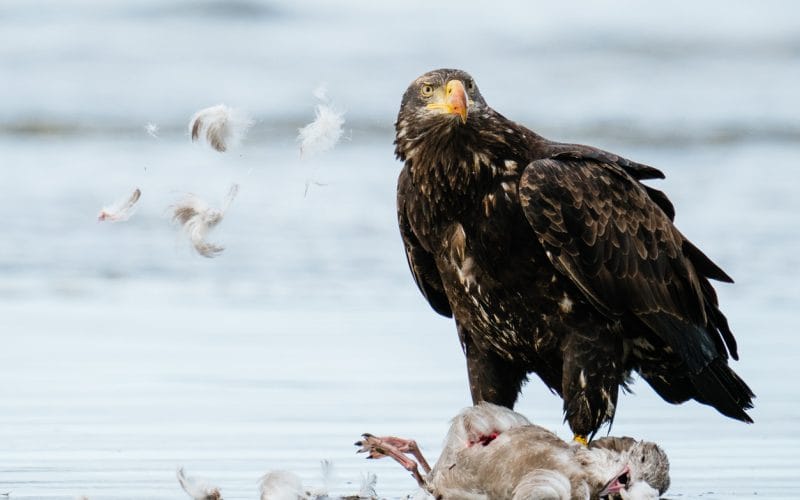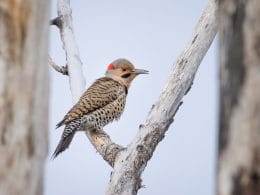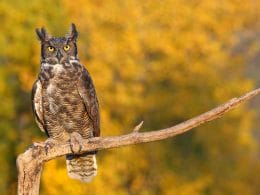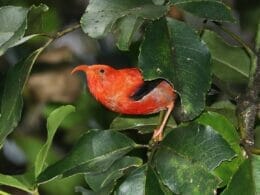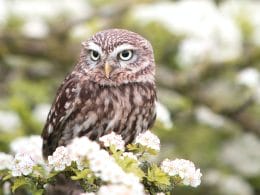“It is not only fine feathers that make fine birds.” – Aesop
Colors also contribute greatly to the beauty of birds. There’s no question that birds are fascinating creatures. The differences and similarities between the many bird species make it possible to give them all kinds of sortings.
Our sorting today will be restricted to the yellow colors on the chests of birds. In this article, we’re listing eight birds with yellow chests.
Top 8 Most Common Birds with Yellow Chests
1. American Goldfinch

- Scientific name: Spinus tristis
- Length: 4.3 – 5.1 inches
- Weight 0.4 – 0.7 ounces
- Wingspan: 7.5 – 8.7 inches
The American Goldfinch is a common and bright bird of the Fringillidae family. It is one of our most common backyard birds and is celebrated all over the country.
Author Note: The male American Goldfinch is yellow all over with a black cap and on the wings. The non-breeding male and female are a duller olive brown.
In non-breeding and molting periods, the American Goldfinch are much less glamorous with a duller and often raggedy plumage.
American Goldfinch are enthusiastic backyard bird feeder visitors and enjoy seeds which supplement their normal diet. However, you can also attract them by planting native thistles in your garden.
The American Goldfinch is the state bird of Iowa, Washington and New Jersey.
The Brown-headed Cowbird will sometimes lay their eggs in the nest of the American Goldfinch. However, unlike other birds that switch to a high protein insect diet to feed to their chicks so they grow fast, the goldfinch sticks with seeds and the cowbird chicks do not survive.
2. Western Tanager
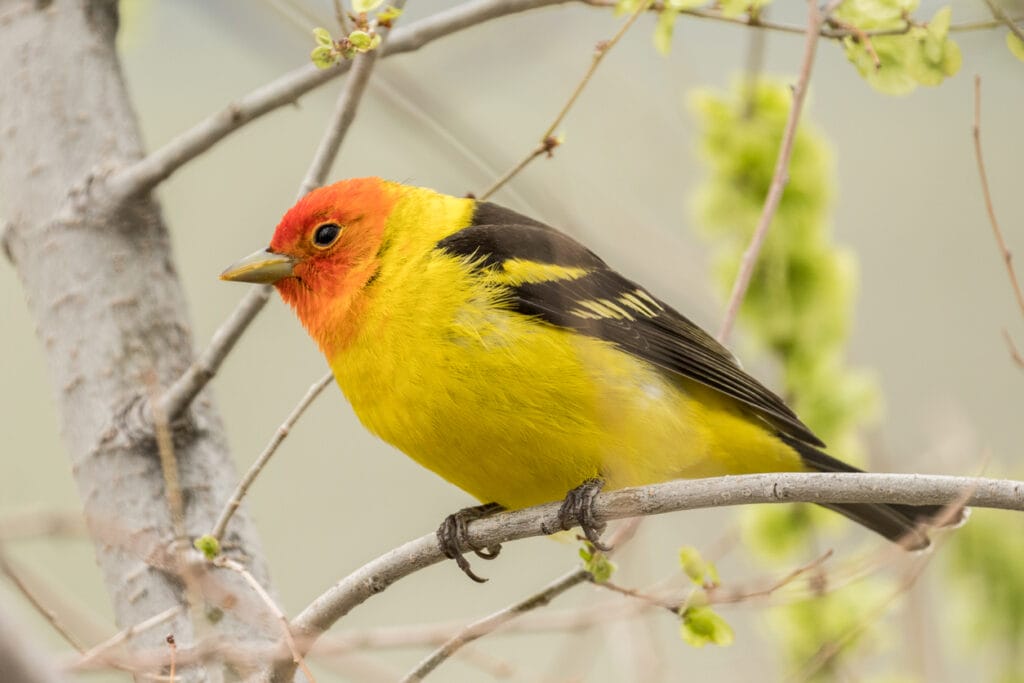
- Scientific name: Piranga Ludoviciana
- Length: 6.3 – 7.25 inches
- Weight: 0.8 – 1.3 ounces
- Wingspan: 11 – 11.5 inches
The closest resemblance to the male Western Tanager is the flame. The head is reddish-orange, followed by a vivid yellow chest and body that ends with a black back and tail.
The female may not look as vivid as the male but it still has that yellow chest. The back and tail are also much lighter in color than the male.
Western Tanagers can be found mostly in the western states. They breed in the Northern ones like Oregon, Idaho, and Washington. During winter, they migrate south to New Mexico, Arizona, and Texas where it’s a bit warmer.
Western Tanagers eat insects like wasps, ants, and caterpillars. They could also eat dried fruit or fresh fruit at bird feeders. They nest in trees where they could easily find their food from leaves and foliage.
To attract the female, male Western Tanagers perform a strange courtship ritual. They suddenly tumble past a female while showing their flashy colors.
The oldest recorded Western Tanager was a male in Nevada that lived at least 6 years and 11 months. It’s another one of the most common birds with yellow chests
The song of the Western Tanager sounds like a chuckling call note.
3. Audubon’s Oriole

- Scientific name: Icterus Draduacauda
- Length: 7.5 – 9.4 inches
- Weight: 1.1 – 1.9 ounces
- Wingspan: 12.3 – 12.6 inches
Audubon’s Oriole (previously known as Black-headed Oriole) is a member of the Icteridae family.
The body of the Audubon’s Oriole is mostly vivid yellow while the crown, wings, legs, and tail are all black. The bill is medium-sized, pointy, and also black.
Males and females look quite similar except for the color vividness. The yellow on the males is somewhat more vibrant than it’s on females.
Audubon’s Orioles are native to Mexico where they can be found all year long. If you live in the southern part of Texas, there’s a great chance that you might spot them as they nest there as well.
They prefer open woodland where they form their nests hidden in branches of trees. They may pay a visit to nearby backyards if their trees have thick vegetation or fruiting shrubs.
Like most birds, they feed on small insects and fruits. They could catch the insects mid-air or pick them off the ground or the branches. Additionally, they insert their pointy bills inside holes in the trees to catch unsuspecting insects.
More than half the Audubon’s Orioles nests in Texas contain Eggs of the Bronzed Cowbirds. Audubon’s Orioles don’t harm the Cowbirds’ eggs and the female could even lay on them to keep them warm.
Audubon’s Orioles sound like a person who’s learning to whistle, so it’s easy to locate them using that calling sound.
4. Yellow-Bellied Sapsucker
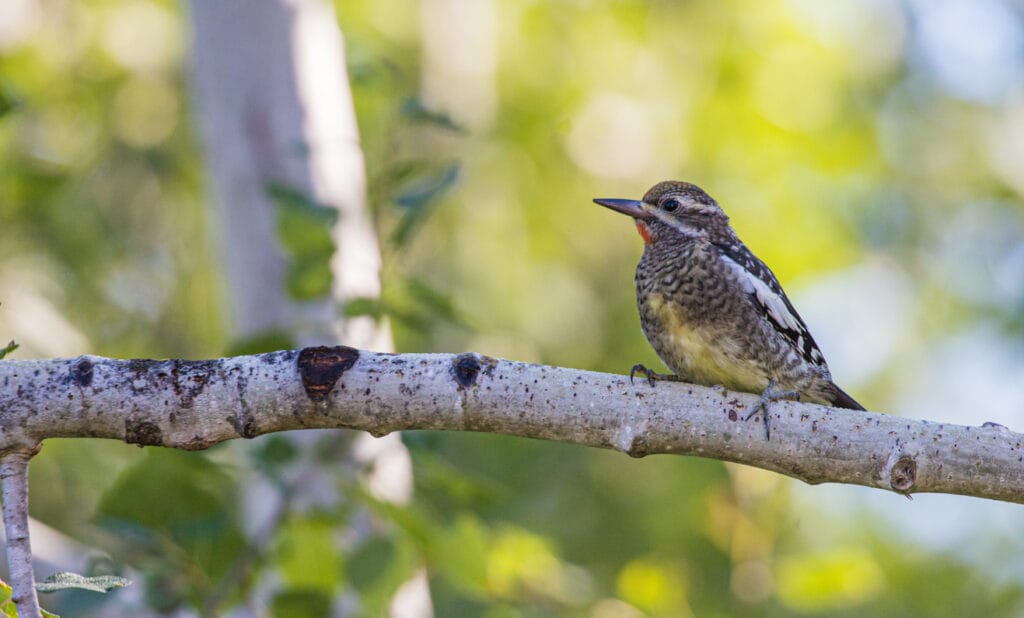
- Scientific name: Sphyrapicus Varius
- Length: 7.1 – 8.7 inches
- Weight: 1.5 – 1.9 ounces
- Wingspan: 13.4 – 15.8 inches
The Yellow-Bellied Sapsucker is a robin-sized bird that belongs to the woodpecker family.
Yellow-Bellied Sapsuckers are generally colored black and white. The back, wings, and tails are black with white speckles while the belly is white with black spots.
Top Tip: The males have red throats and foreheads while the females only have red foreheads. Both genders have a small yellow patch on their chests.
Yellow-Bellied Sapsuckers breed in southern Canada and the northeastern states like New York, Massachusetts, and Connecticut. In winter, they migrate towards the central stars like Missouri and Illinois where you could find them drilling holes in trees.
Yellow-Bellied Sapsuckers use their sharp bills and brush-tipped tongues to suck tree saps and any insects they could catch as they do that. They either make circular deep holes where they insert their bills deep for food, or shallow rectangular holes where the tree sap would flow.
Yellow-Bellied Sapsuckers have a rather… unique singing. They sound like a blaster from Star Wars that’s been accelerated. Don’t believe us? See for yourself. Now you’ll never get that one wrong.
5. Couch’s Kingbird

- Scientific name: Tyrannus Couchii
- Length: 7.9 – 9.4 inches
- Weight: 1.2 – 1.4 ounces
- Wingspan: 14 – 16 inches
Couch’s Kingbird is a robin-sized bird that belongs to the Tyrant Flycatcher family. It’s a buff-looking yellow bird with gray wings and head. The bill, feet, and eyes are all black.
Couch’s Kingbirds live all year long in Mexico and they can be sighted in Texas as well. These birds have a sharp vision which enables them to locate and catch insects mid-air.
They use their large wings to hover in the air and watch for flying insects to feed on, hence the “Flycatcher” family name. In addition to fling insects, Couch’s Kingbirds also feed on beetles, grasshoppers, berries, and seeds.
Top Tip: The “couch” in the bird’s name came from Lieutenant Darius Nash Couch. He was a soldier in the United States Army who collected the first Couch’s Kingbird back in 1853. That was near San Diego, Mexico.
Couch’s Kingbird shares a very similar look to the Tropical Kingbird (our next bird). The call sound is the one thing that differentiates between them.
Couch’s Kingbird has a distinctive grating call that can’t be made by any other bird. It goes something like “kip-kip-breeeeeet” which is then followed by continuous “bret-bret-bret” noises.
6. Tropical Kingbird

- Scientific name: Tyrannus Melancholicus
- Length: 7.1 – 9.1 inches
- Weight: 1.1 – 1.5 ounces
- Wingspan: 15 – 16 inches
The Tropical Kingbird is a common sight in South America. Much like the Couch’s Kingbird, it also belongs to the Tyrant Flycatcher family.
Tropical Kingbirds have a similar “black and yellow” color pattern to Couch’s Kingbird. They also have the same puffy yellow chest and relatively the same size, weight, and wingspan.
Despite breeding in South America, you can still spot the Tropical Kingbirds in the southern parts of Arizona and New Mexico as they breed in their forests. They’ve become regular visitors to the Pacific Coast of the U.S.
Their relatively large sizes allow them to hunt for larger insects than most birds on our list. They feed on wasps, bees, crickets, beetles, and dragonflies. They catch them mid-air just like their Couch cousins do.
To make their food-seeking journeys easier, they build their nests near large wasp nests or beehives.
Tropical Kingbird’s “pit prrrrrrrr pit prrrrrrrrrr” call is the only thing that can help you distinguish between Tropical Kingbirds and Couch’s Kingbirds.
7. Yellow-breasted Chat
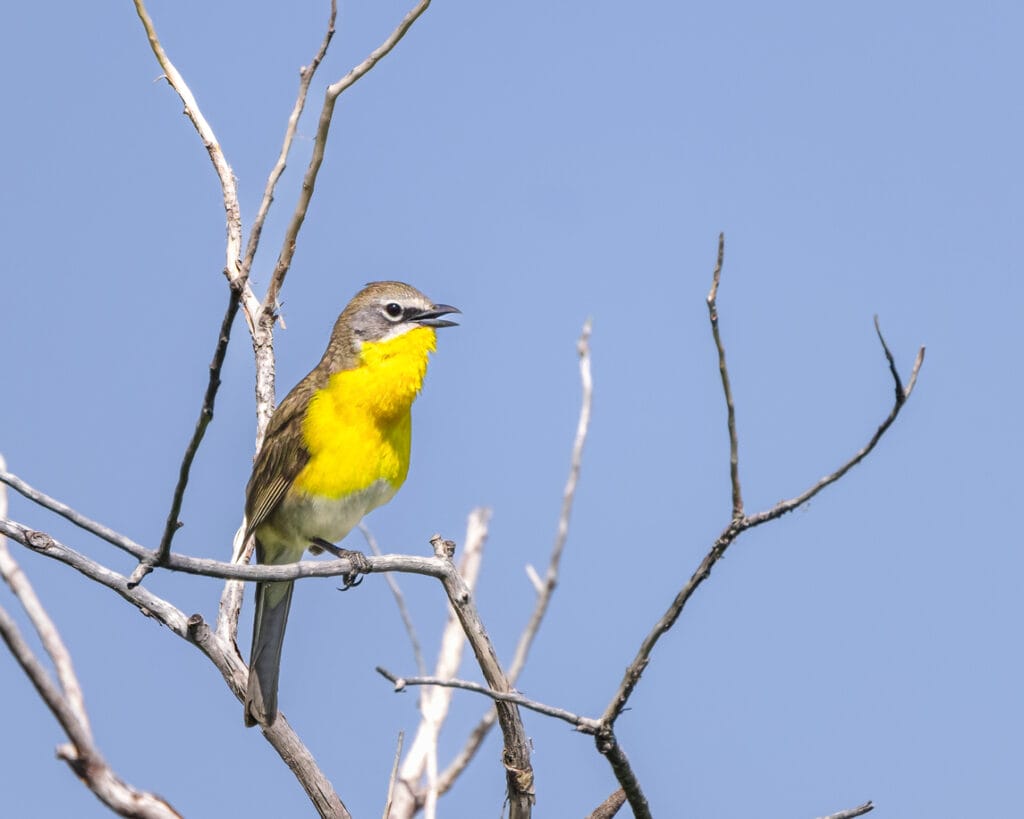
- Scientific name: Icteria Virens
- Length: 6.7 – 7.5 inches
- Weight: 0.8 – 0.9 ounces
- Wingspan: 9.1 – 10.6 inches
The Yellow-breasted Chat is the largest member of the wood-warbler family. This beautiful bird is mostly covered with a plain olive color that gets darker when it reaches the head.
The bill is black, short, and relatively heavy. The black color of the bill extends back until it reaches a dark eye. The throat, chest, and belly are all yellow. Both males and females share this description.
Author Note: The Yellow-breasted Chat is mostly found in the Northern States of America in Summer. Examples of these are New Hampshire, Pennsylvania, New York, Virginia, and North Carolina.
In winter, Yellow-breasted Chats migrate to Mexico where it’s a bit warmer.
Yellow-breasted Chats don’t form feeding flocks. These birds like to look for food individually through the foliage. They generally feed on small insects but fruits can sometimes make up to 50% of their diets.
When Yellow-breasted Chats eat, they exhibit behaviors you wouldn’t often see. They hold their food with their legs and take little bites from it until they finish their meal.
Yellow-breasted Chat females build their nests in well-concealed areas up to eight feet above the ground. The female often lays three or four eggs but both parents take responsibility for feeding the young.
Yellow-breasted Chats’ songs sound like hoots and whistles and it’s easy to distinguish among other birds.
8. Palm Warbler
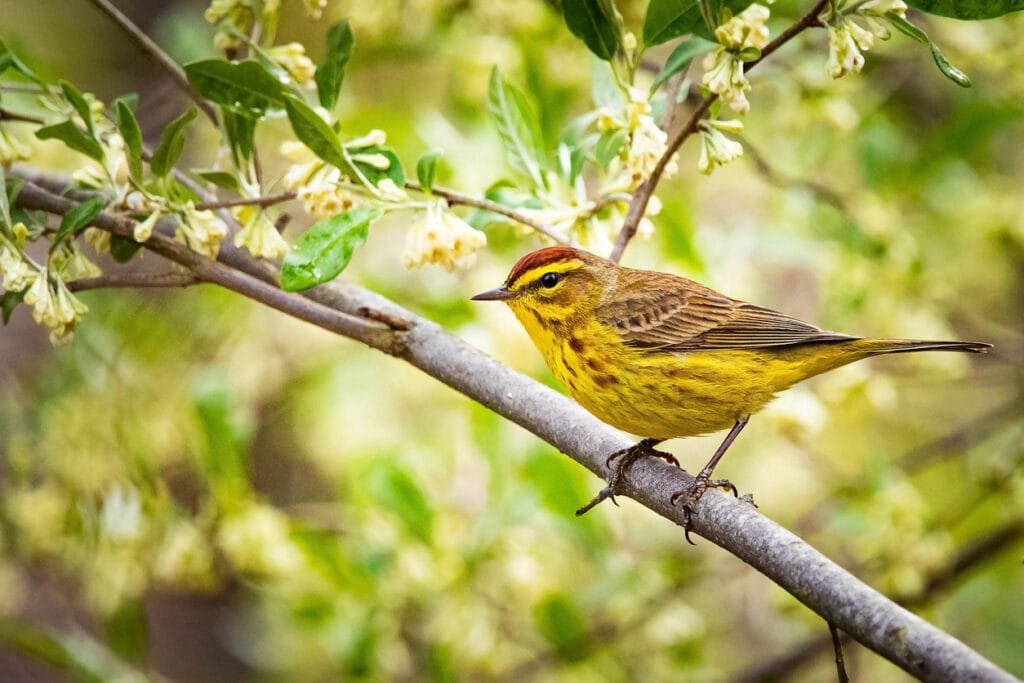
- Scientific name: Setophaga Palmarum
- Length: 4.7 – 5.5 inches
- Weight: 0.3 – 0.5 ounces
- Wingspan: 7.9 – 8.3 inches
Palm Warblers are tiny songbirds that don’t seem to care too much about their vulnerability. They spend most of their time on the ground, walking and wagging their tails as if nothing could happen!
Palm Warblers have brownish-olive backs that get darker as you approach the wings. The rest of the body is yellow and the color gets brighter as you approach the chest. You can identify the Palm Warblers by the flashing light coming out of their tails mid-flight.
The head is often yellow but both genders have a rusty cap during breeding seasons.
Palm Warblers breed mainly in Canada and the northern areas of Wisconsin and Minnesota. In winter, they migrate down to the central and eastern states.
Because Palm Warblers often walk on the ground, they also build their nests there in peat moss. Most commonly at the base of a tree or a shrub.
They mainly feed on beetles, caterpillars, and flies. Berries and seeds also contribute to a good portion of Palm Warblers’ diets.
Around 98% of Palm Warblers consider the Great Boreal Forest their home. They spend most mornings singing in short 3-second buzzing notes separated by around 15 seconds of silence.
The End
We’ve tried our best to make sure that you could see all of those birds with yellow chests in the United States. To ensure diversity and the presence of some interesting facts, we couldn’t have all the eight birds in America, though.
However, you could still spot the majority of them (seven to be exact) in the U.S.
Most of these birds nest in trees and feed on insects and fruit. So if you want to attract some of them to your backyard, make sure to have enough green and some seeds or fruit in your feeders.
FAQ
Yes, the Bullock’s, Scott’s, Hooded, Spot-breasted all have orange on their fronts while the Altamira, Baltimore, Streak-backed and Orchard Orioles are more orange.
The Golden-bellied Flycatcher is resident on the northern tip of South America and through Central America to Costa Rica. It doesn’t reach the U.S.
The Yellow-throated Warbler has yellow on the throat and top of the breast. It can be found on the eastern side of the U.S., through the west to a lesser extent and into Central America.